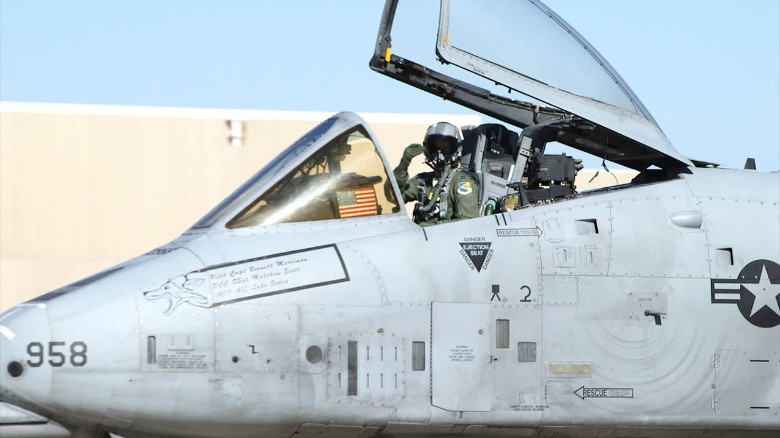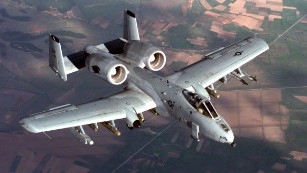ISIS may have saved the A-10
ISIS seems determined to destroy much of what's in its path as it tries to conquer more territory in Iraq, Syria and elsewhere, but it may have inadvertently saved a fleet of U.S. Air Force jets.
Gen. David Goldfein, the Air Force's vice chief of staff, tells Defense News the rise of the Islamic State and the U.S. air campaign to fight it has prompted the service to reconsider plans to retire the A-10 ground attack jets, which first joined the Air Force fleet in 1975.
The Air Force's version of the F-35 will eventually replace the A-10 Thunderbolt, but those new jets are just coming online and are not battle tested like the A-10, which has seen combat in Iraq, Afghanistan and recently in Syria against ISIS -- also known as ISIL.

Is the A-10 headed for the graveyard? 03:02
"When we made the decision on retiring the A-10, we made those decisions prior to ISIL, we were not in Iraq, we were coming out of Afghanistan to a large extent, we didn't have a resurgent Russia," Goldfein said in an interview on "Defense News with Vago Muradian," scheduled for broadcast this weekend, according to the Defense News website.
Goldfein's office confirmed the general's remarks to CNN.
The revelation came a week after a report was published on the Defense One websitein which Pentagon officials, speaking on condition of anonymity, said retirement of the A-10, nicknamed the "Warthog," would not be part of the Pentagon budget request that will be submitted to Congress in February.
The Defense One report about pushing back the A-10's retirement drew praise from Sen. John McCain, R-Arizona, chairman of the Senate Armed Services Committee.
"I welcome reports that the Air Force has decided to keep the A-10 aircraft flying through fiscal year 2017, ensuring our troops have the vital close air support they need for missions around the world. Today, the A-10 fleet is playing an indispensable role in the fight against ISIL in Iraq and assisting NATO's efforts to deter Russian aggression in Eastern Europe," McCain said in a statement.
"With growing global chaos and turmoil on the rise, we simply cannot afford to prematurely retire the best close air support weapon in our arsenal without fielding a proper replacement," McCain's statement said.
The Pentagon's position on the A-10 had been that it needed the money and crews being used to keep the A-10s flying for the F-35 and other missions.
But unlike the multi-role F-35, the A-10 is the only airplane in the Air Force specifically designed for close air support, a mission that has become urgent in the fight against ISIS.
Able to circle over a target for long periods, the straight-winged Warthog is supremely maneuverable at low speeds and altitudes. So when ground troops find themselves in trouble -- and too close to the enemy for fighter jets to drop bombs without risking friendly fire casualties -- A-10 pilots can skim hillsides day and night, under any type of weather, and accurately and punishingly engage ground targets with its powerful 30 mm, seven-barrel Gatling gun, which fires depleted uranium bullets at 3,900 rounds per minute.
The A-10's role in the fight against ISIS was highlighted in Operation Tidal Wave II in November, when A-10s combined with AC-130 gunships to destroy 116 ISIS fuel tanker trucks.
News Courtesy: www.cnn.com











